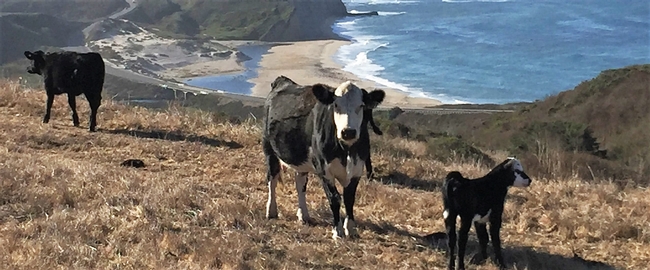A new study on the costs and returns of a beef cattle operation has been released by the University of California Agriculture and Natural Resources' Agricultural Issues Center. The estimated costs can help ranchers and land management agencies on California's Central Coast make business decisions.
“This cost study can be a valuable tool for someone who is thinking about going into the cattle business because it will help them think through the various categories of costs, and aid in developing a budget and business plan,” said Devii Rao, University of California Cooperative Extension livestock and natural resources advisor for San Benito, Monterey and Santa Cruz counties.
Based on the typical costs of a 300-head cow-calf operation, the study estimates costs of an owner-operated beef cattle operation located on leased rangeland in the Central Coast region of California. The cost calculations in this study are based on economic principles that include all cash costs and uses the rental cost per animal unit month (AUM) as a cost of pasture.
“The study can also be used by a seasoned rancher,” said Rao, a co-author of the study. The first cost table has an empty column titled, “Your Costs.” This is probably one of the most useful pages for the experienced rancher. Producers can use this column to enter their own costs and compare them to the costs in the study. It will help them think about where they can make changes in their operation to reduce costs.”
The analysis is based upon a hypothetical cow-calf operation, where the cattle producer leases all rangeland. The “typical” ranch in the Central Coast is an owner-operated cow-calf operation using multiple private and public leases. The practices described represent production practices and materials considered typical of a well-managed ranch in the region.
Input and reviews for this study were provided by ranch operators, UC ANR Cooperative Extension farm advisors and other agricultural associates. A narrative describes the assumptions used to identify current costs for the cow-calf herd, material inputs, cash and non-cash overhead. A ranging analysis table shows profits over a range of average market prices. Other tables show the costs and revenue for production, monthly summary of costs and revenue, and the annual equipment, investment and business overhead costs.
“This study will also be of value to land management agencies that lease their lands for cattle grazing,” she said. “Many agency staff are not familiar with the different aspects of cow/calf operations. For land management agency staff, the most useful portion of the study is likely to be the Operations Calendar, which summarizes the timeline for breeding, branding, vaccinating, calving, shipping, etc.”
“Sample Costs for Beef Cattle – Central Coast Region – 2018” can be downloaded for free from the UC Davis Department of Agricultural and Resource Economics website at https://coststudies.ucdavis.edu. Sample cost of production studies for many other commodities are also available at the website.
For additional information or an explanation of the calculations used in the studies, contact Donald Stewart at the Agricultural Issues Center at (530) 752-4651 or destewart@ucdavis.edu.
For information about beef cattle production in the Central Coast region, contact Rao at drorao@ucanr.edu.
